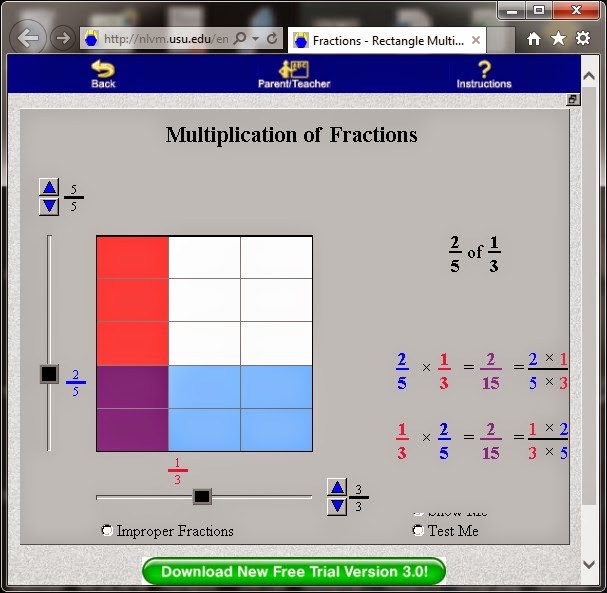The National Library of Virtual Manipulatives was the best that I found. It is incredibly comprehensive and flexible to your specific needs.
Checking on one of the boxes will take you to a list of Java applets for that math strand and grade level range. In my third grade class, I use this heavily for place value study.
I love this applet. You simply click on the ones, tens, hundreds, or thousands blocks at the top of the chart to insert pictures below. To the right it shows you the number made by the blocks (I will often conceal this from students depending on the lesson focus/purpose). What I REALLY love about this applet is the visual representation of re-and un-grouping. For example, you can click a hundred square, drag it into the tens column, and it will separate into 10 ten rods. Or, you could use your mouse to highlight 10 ones and they will turn into a tens rod. The students really love watching it happen. I'm always surprised how excitedly they will call out things like"Mr. Thompson! Turn one of the thousands into 10 hundreds again!".
There are several great applets for fractions, also.
 I love how easily customizable these manipulatives are, and that there are applications for so many levels throughout all the strands.
I love how easily customizable these manipulatives are, and that there are applications for so many levels throughout all the strands.
For fractions there are apps for fraction identification, equivalency, multiplying, and more
Of course there are several applets focusing on geometry. I love the virtual geoboard!
I would encourage you to check out this great online math resource! I'm not a fan of Java software, the site isn't very "pretty", and most of these could use some updating to modern web standards, but I haven't found anything this comprehensive and customizable. It has been a valuable part of my mathematics instruction.

















